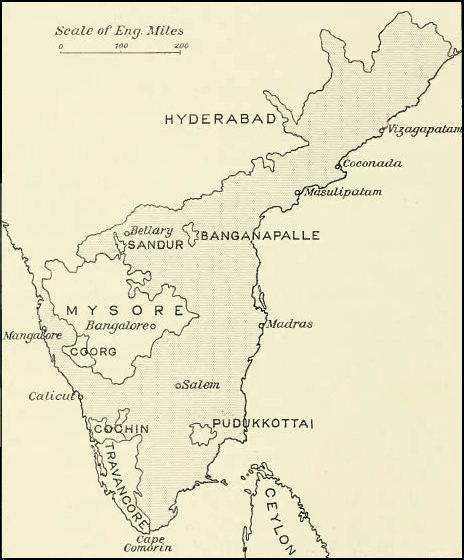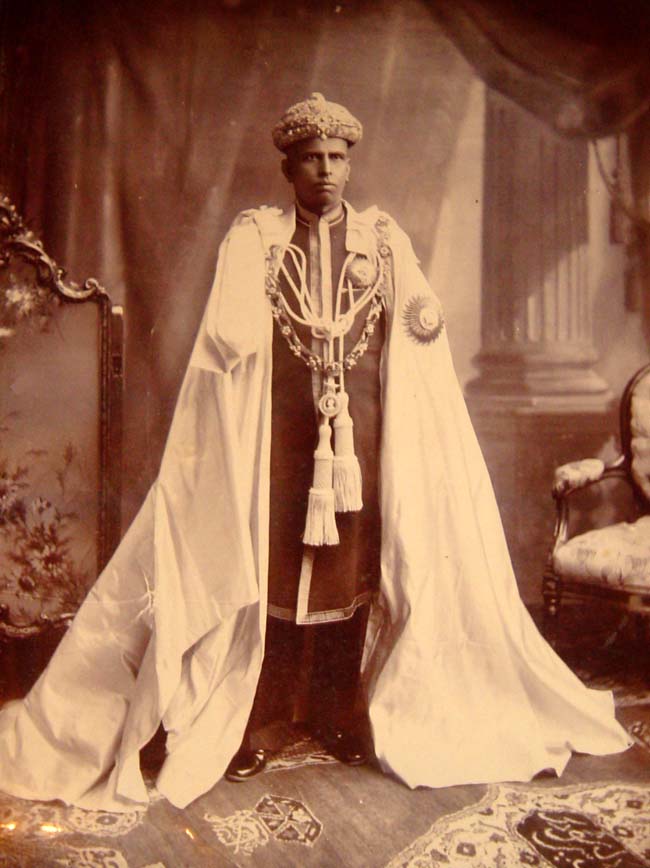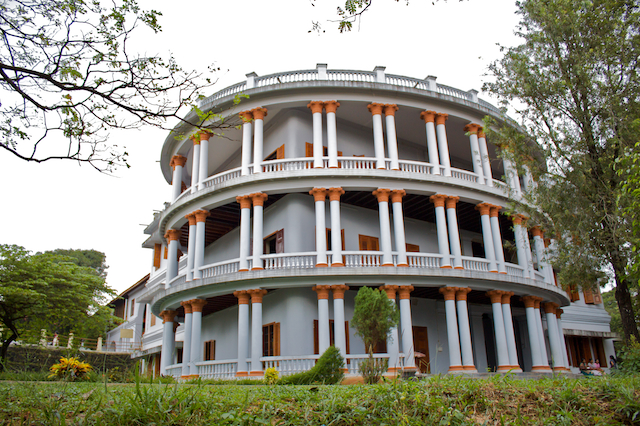|
Thripunithura
Thrippunithura or Tripunithura (Malayalam:തൃപ്പൂണിത്തുറ) is a prominent historical and residential region in the city of Kochi in Kerala, India. Located about 7 km (4 mi) from the city centre, Tripunithura was the capital of the erstwhile Kingdom of Cochin. The descendants of the Cochin royal family still live here. The Hill Palace situated in Tripunithura was the palace of Maharaja of Cochin, the ruler of Kingdom of Cochin. Tripunithura is also well known for its historical cultures and worldwide famous because of Sree Poornathrayeesa Temple and the annual festival ''Vrishchikoltsawam'' that takes place at the temple. In local administration, it is a municipality named Tripunithura Municipality. In the state administrative structure, Tripunithura is part of the Ernakulam District in the state of Kerala. Etymology Some latter day Sanskrit enthusiasts describe the origin of the name to "pūrṇa vēda puri" — the town of Vedas in its ent ... [...More Info...] [...Related Items...] OR: [Wikipedia] [Google] [Baidu] |
Kingdom Of Cochin
The kingdom of Cochin or the Cochin State, named after its capital in the city of Kochi (Cochin), was a kingdom in the central part of present-day Kerala state. It originated in the early part of the 12th century and continued to rule until its accession to the Dominion of India in 1949. The kingdom of Cochin, originally known as Perumpadappu Swarupam, was under the rule of the Kulasekhara dynasty (Second Cheras), Later Cheras in the Medieval India, Middle Ages. After the fall of the Kulasekhara dynasty (Second Cheras), Mahodayapuram Cheras in the 12th century, along with numerous other provinces Perumpadappu Swarupam became a free political entity. However, it was only after the arrival of Portuguese on the Malabar Coast that the Perumpadappu Swarupam acquires any political importance. Perumpadappu rulers had family relationships with the Nambudiri rulers of Edappally. After the transfer of Kochi and Vypin from the Edappally rulers to the Perumpadappu rulers, the latter came ... [...More Info...] [...Related Items...] OR: [Wikipedia] [Google] [Baidu] |
Ernakulam District
Ernakulam (; ISO: ''Eṟaṇākuḷaṁ'') is one of the List of districts of Kerala, 14 districts in the States and union territories of India, Indian state of Kerala, and takes its name from the Ernakulam, eponymous city division in Kochi. It is situated in the central part of the state, spans an area of about , and is home to over 9% of Kerala's population. Its headquarters are located at Kakkanad. The district includes Kochi, also known as the commercial capital of Kerala, which is famous for its ancient Churches of Kerala, churches, Hindu temples, List of synagogues in Kerala, synagogues and mosques. The district includes the largest metropolitan region of the state: Greater Cochin. Ernakulam district yields the highest revenue and the largest number of industries in the state. Ernakulam is the second most populous district in Kerala, after Malappuram district, Malappuram (out of List of districts in Kerala, 14 districts). The district also hosts the highest number of int ... [...More Info...] [...Related Items...] OR: [Wikipedia] [Google] [Baidu] |
Hill Palace, Tripunithura
Hill Palace is an archaeological museum and palace located in the Tripunithura neighbourhood of Kochi, Kerala. It is the largest archeological museum in the state and was the imperial administrative office and official residence of the Cochin Maharaja. Built in 1865, the palace complex consists of 49 buildings spreading across and built in the traditional architectural style. The complex has an archaeological museum, a heritage museum, a deer park, a pre-historic park and a children's park. The campus section of the museum is home to several rare species of medicinal plants. Presently, the palace has been converted into a museum by The Kerala State Archaeology Department and is open to the public. The palace is about from the city centre and is reachable by road and by rail. The Centre for Heritage Studies (CHS), an autonomous research and training institute set up by the Department of Cultural Affairs, of the Government of Kerala also functions at the site. The CHS is desi ... [...More Info...] [...Related Items...] OR: [Wikipedia] [Google] [Baidu] |
Hill Palace
Hill Palace is an archaeological museum and palace located in the Tripunithura neighbourhood of Kochi, Kerala. It is the largest archeological museum in the state and was the imperial administrative office and official residence of the Cochin Maharaja. Built in 1865, the palace complex consists of 49 buildings spreading across and built in the traditional architectural style. The complex has an archaeological museum, a heritage museum, a deer park, a pre-historic park and a children's park. The campus section of the museum is home to several rare species of medicinal plants. Presently, the palace has been converted into a museum by The Kerala State Archaeology Department and is open to the public. The palace is about from the city centre and is reachable by road and by rail. The Centre for Heritage Studies (CHS), an autonomous research and training institute set up by the Department of Cultural Affairs, of the Government of Kerala also functions at the site. The CHS is de ... [...More Info...] [...Related Items...] OR: [Wikipedia] [Google] [Baidu] |
Kochi
Kochi ( , ), List of renamed Indian cities and states#Kerala, formerly known as Cochin ( ), is a major port city along the Malabar Coast of India bordering the Laccadive Sea. It is part of the Ernakulam district, district of Ernakulam in the state of Kerala. The city is also commonly referred to as Ernakulam. As of 2011, the Kochi Municipal Corporation had a population of 677,381 over an area of 94.88 km2, and the larger Kochi metropolitan area, Kochi urban agglomeration had over 2.1 million inhabitants within an area of 440 km2, making it the largest and the Demographics of Kerala#Most populous urban agglomerations, most populous Kochi Metropolitan Area, metropolitan area in Kerala. Kochi city is also part of the Greater Cochin development region and is classified as a Tier-II city by the Government of India. The civic body that governs the city is the Kochi Municipal Corporation, which was constituted in the year 1967, and the statutory bodies that oversee its ... [...More Info...] [...Related Items...] OR: [Wikipedia] [Google] [Baidu] |
RLV College Of Music And Fine Arts
RLV College of Music and Fine Arts is an academic institution situated in Thripunithura, Kochi in the state of Kerala, India. It is affiliated to the Mahatma Gandhi University and offers graduate and postgraduate courses in music, performing arts and visual arts. The current principal is Prof. C. J. Suseela History The college began in a single apartment belonging to the Cochin Royal family. The then King of Cochin, Kerala Varma Midukkan Thampuran and his wife Lakshmikutty Nethyaramma invited experts in stitching, Kaikottikkali, and painting to impart learning to girls and elder ladies. This endeavor developed into an institution in the name of the King’s daughter Radha and wife Lakshmi and was named Radha Lakshmi Vilasam Academy incorporating vocal music also. In 1956, the institution was brought under the control of the Government of Kerala and was renamed as RLV Academy of Music and Fine Arts. Diploma and Post Diploma Courses in vocal music, ''Bharatanatyam'', ... [...More Info...] [...Related Items...] OR: [Wikipedia] [Google] [Baidu] |
Municipalities Of Kerala
Kerala has an urbanisation rate of 47.42%, as compared to the national rate of 31.16%, making it the 2nd most urbanised major state in India. Within Kerala, the rate of urbanisation varied from 3.9% in Wayanad district, Wayanad district to 68.1% in Ernakulam district, Ernakulam district. Municipalities are the urban local governments that deal with civic functions and local development functions in the municipal area. The state of Kerala has 87 municipalities and six municipal corporations. With 13 municipalities, the district of Ernakulam has the most municipalities in the state. History The urban councils of Kerala date back to the 17th century when the Dutch Malabar established the municipality of Fort Kochi. In 1664, the municipality of Fort Kochi was established by Dutch Malabar, making it the first municipality in Indian subcontinent, which got dissolved when the Dutch authority got weaker in 18th century. However, the first modern kind of municipalities were formed in t ... [...More Info...] [...Related Items...] OR: [Wikipedia] [Google] [Baidu] |
Lok Sabha
The Lok Sabha, also known as the House of the People, is the lower house of Parliament of India which is Bicameralism, bicameral, where the upper house is Rajya Sabha. Member of Parliament, Lok Sabha, Members of the Lok Sabha are elected by an adult universal suffrage and a first-past-the-post system to represent their respective List of constituencies of the Lok Sabha, constituencies, and they hold their seats for five years or until the body is dissolved by the president of India on the advice of the Union Council of Ministers. The house meets in the Lok Sabha Chambers of the New Parliament House, New Delhi. The maximum membership of the House allotted by the Constitution of India is 552. (Initially, in 1950, it was 500.) Currently, the house has 543 seats which are filled by the election of up to 543 elected members. Between 1952 and 2020, Anglo-Indian reserved seats in the Lok Sabha, two additional members of the Anglo-Indian community were also nominated by the President ... [...More Info...] [...Related Items...] OR: [Wikipedia] [Google] [Baidu] |
Quiver
A quiver is a container for holding arrows or Crossbow bolt, bolts. It can be carried on an archer's body, the bow, or the ground, depending on the type of shooting and the archer's personal preference. Quivers were traditionally made of leather, wood, furs, and other natural materials, but are now often made of metal or plastic. Etymology The English word quiver has its origins in Old French, written as quivre, cuevre, or coivre. Types Belt quiver The most common style of quiver is a flat or cylindrical container suspended from the belt. They are found across many cultures from North America to China. Many variations of this type exist, such as being canted forwards or backwards, and being carried on the dominant hand side, off-hand side, or the small of the back. Some variants enclose almost the entire arrow, while minimalist "pocket quivers" consist of little more than a small stiff pouch that only covers the first few inches. The Bayeux Tapestry shows that most bowme ... [...More Info...] [...Related Items...] OR: [Wikipedia] [Google] [Baidu] |
Kalamandalam Krishnan Nair
Kalamandalam Krishnan Nair (27 March 1914 – 15 August 1990) was a Kathakali dancer from Kerala in India. Life He is a recipient of Padma Shri, Sangeet Natak Akademi Award, Kerala Sangeetha Nataka Akademi Award, and Kerala Sangeetha Nataka Akademi Fellowship. A native of Cheruthazham in Payyanur Taluk of Kannur district in North Malabar, Kerala he was initiated into Kathakali in his early teenage years under the tutelage of Guru Chandu Panikker. By 19, he was noticed by Kerala Kalamandalam co-founder, poet Vallathol Narayana Menon, who inducted Krishnan Nair into his institute, then near Mulankunnathukavu, north of Thrissur in central Keralawhere that Krishnan Nair trained under Pattikkamthodi Ravunni Menon, Thakazhi Kunchu Kurup, Kavalappara Narayanan Nair and Mani Madhava Chakyar. Krishnan Nair had his higher studies on '' Rasa-abhinaya'' (facial emotions which stressed on eye exercises) from the Kudiyattam maestro Natyacharya Māni Mādhava Chākyār, who t ... [...More Info...] [...Related Items...] OR: [Wikipedia] [Google] [Baidu] |



